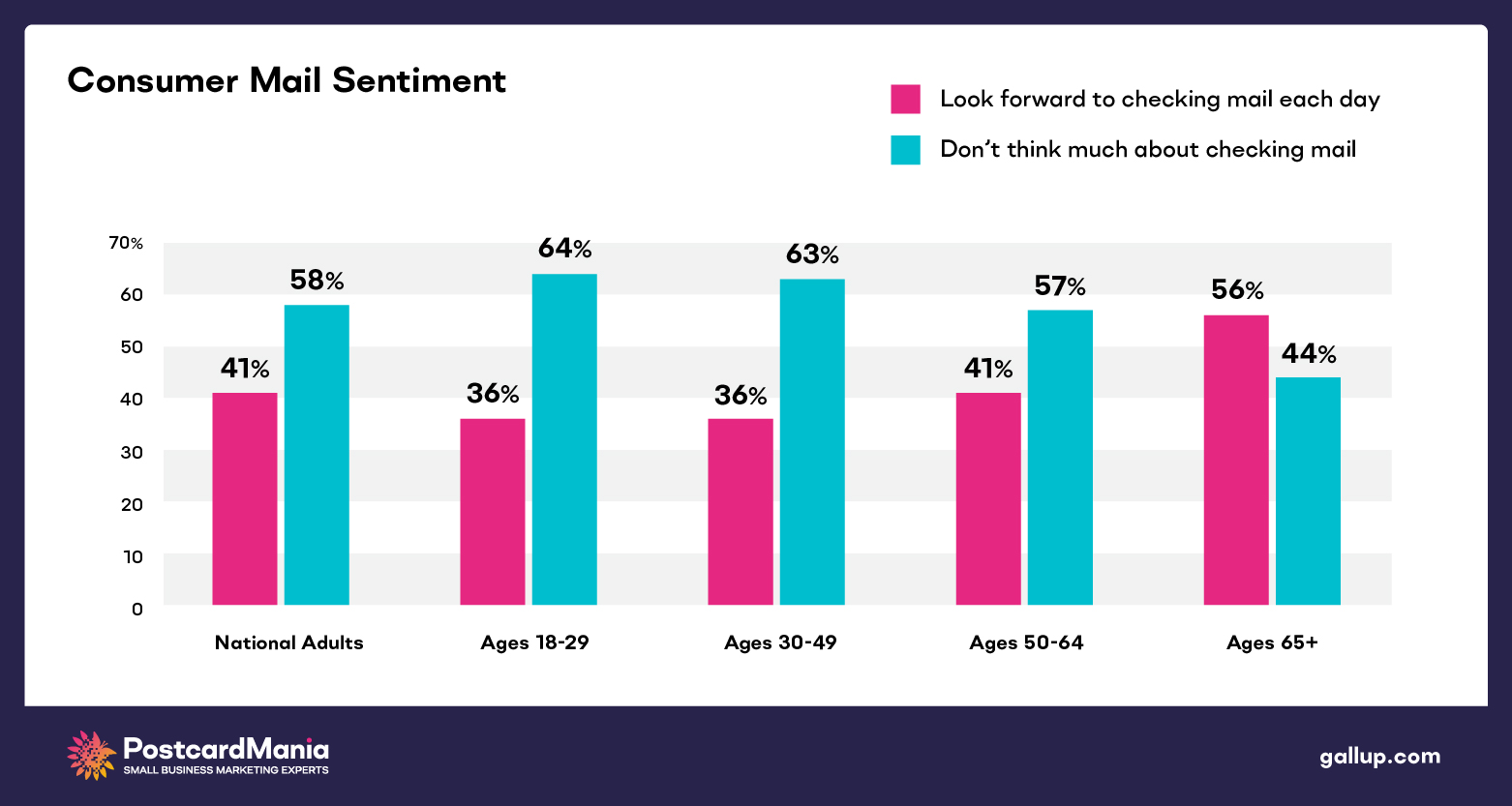
82 Direct Mail Statistics You Should Know in 2022
Harness the Power of Direct Mail in 2024. We've explored some of the top direct mail stats for the industry in 2024. These statistics highlight the efficacy of direct mail marketing in the digital age. With high ROI and response rates, direct mail remains a viable marketing solution for businesses of all sizes and industries.
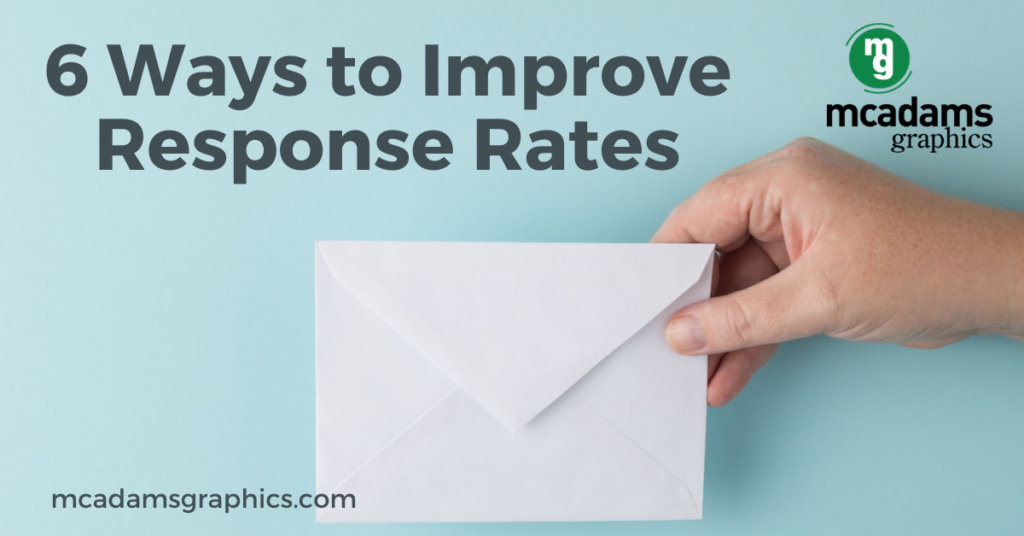
6 Ways You Can Improve Your Direct Mail Response Rates McAdams Graphics
Direct mail response rates chart between 2.9% (for prospects) to 5.3% (house list). Some sources report prospect lists as high as 4.9%. By comparison, email marketing's response rate is a paltry 0.6%. Direct mail's response rates are 5-9x higher than all other advertising channels.
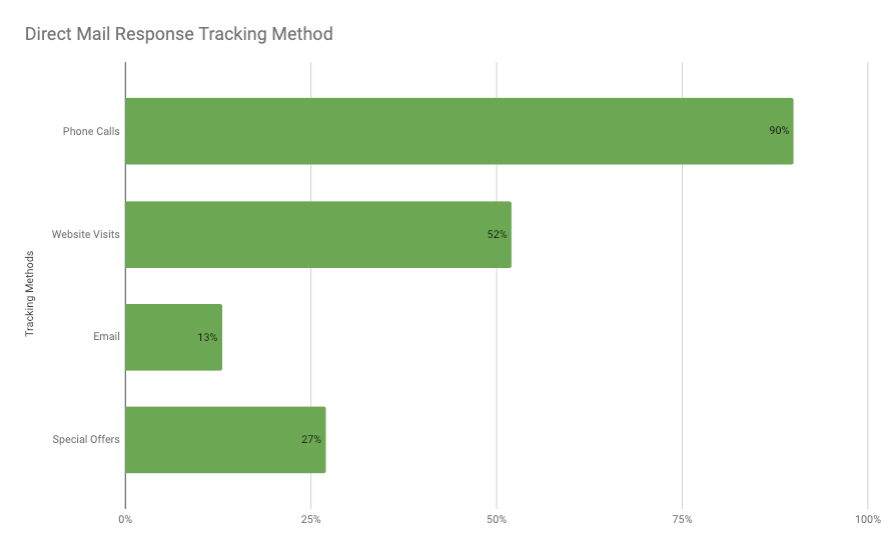
Customer Survey Validates Response Rates for Direct Mail
Direct mail had an average response rate of 9% for house lists and 4.9% for prospect lists in 2018. (Data & Marketing Association) The 2018 DMA Response Rate Report brings news of amazing average direct mail response rates. The household list response rate was 9% in 2018, significantly up from 2017, when it was 5.1%.

Direct mail response rate report 2021 Spectrum Marketing
The response rate to direct mail pieces is 3.7% This figure may not seem so high, but compared to 2% for mobile and 1% for email and social media, [0] Ballantine .
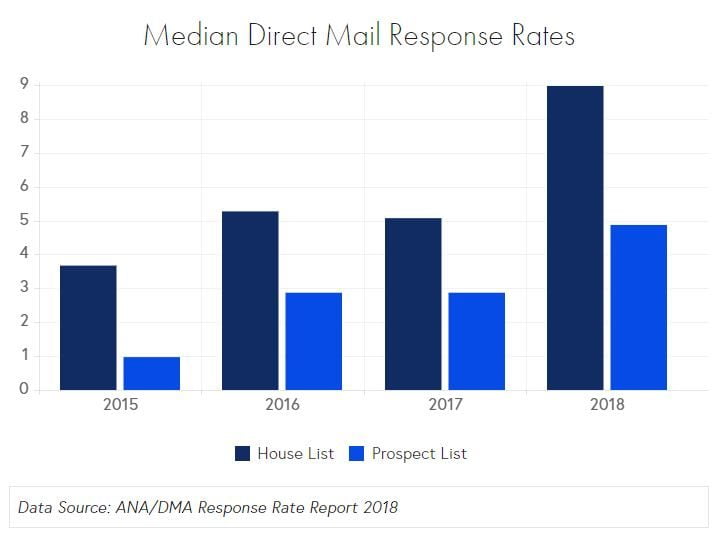
Direct mail response rates Carmine Mastropierro
The average response rate is between 2.7% and 4.4%, compared to email's 0.6% response rate. 73% of American consumers prefer being contacted by brands via mail because they can read it at their own convenience. (Small Biz Genius) More than 40% of direct mail recipients read or at least scan the mail they get. (Small Biz Genius)
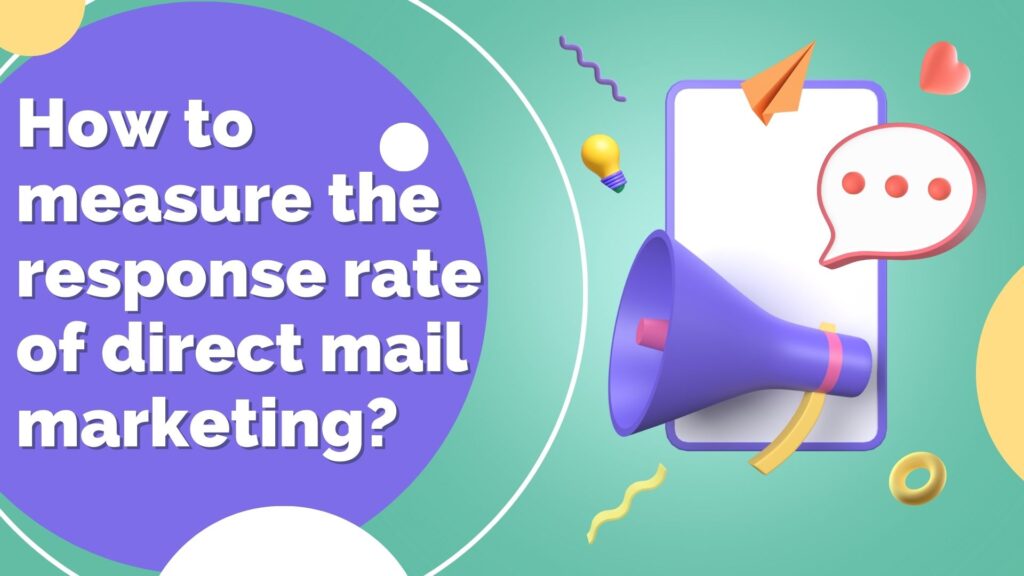
How to measure the response rate of direct mail marketing?
The State of Direct Mail, 2019 7 Direct mail response rates were consistently high across industries and company sizes. Over half of all companies see response rates of 5% or greater across all types of campaigns. Comparing that to the average email response rate of less than 1% shows why companies remain enthusiastic about the channel1.

Direct mail response rates held strong in 2018 Spectrum Marketing
General direct mail response in 2018 was 4.9 percent, higher than in previous years. That number rose to 9 percent for campaigns sent to curated, in-house lists. Other surprises: Letter-sized envelopes still get the best response-rate, most marketers spend just under $50 per response when mailing to a prospect list and a whopping 76 percent of.

Surprising Print Advertising and Direct Mail Statistics 2022 [Huge Response Rate] Cash4Toners
The report also revealed that direct mail's average response rate has increased from 2.9 to 4.9% for prospects and 5.1 to 9% for the household list in one year — 2017-2018. Furthermore, the response rate for direct mail is increasing exponentially every year.

Direct Mail Response Rates Are Better Than Ever and Personalization is
In 2022, PostcardMania's average weekly mail volume increased by 220,300 pieces per week, an 8.15% increase. Direct mail is growing faster post-pandemic. From 2020 to 2023, PostcardMania's annual revenue has grown an average of 15% each year. In the decade previous (2009-2019), annual revenue growth averaged only 4.67%.
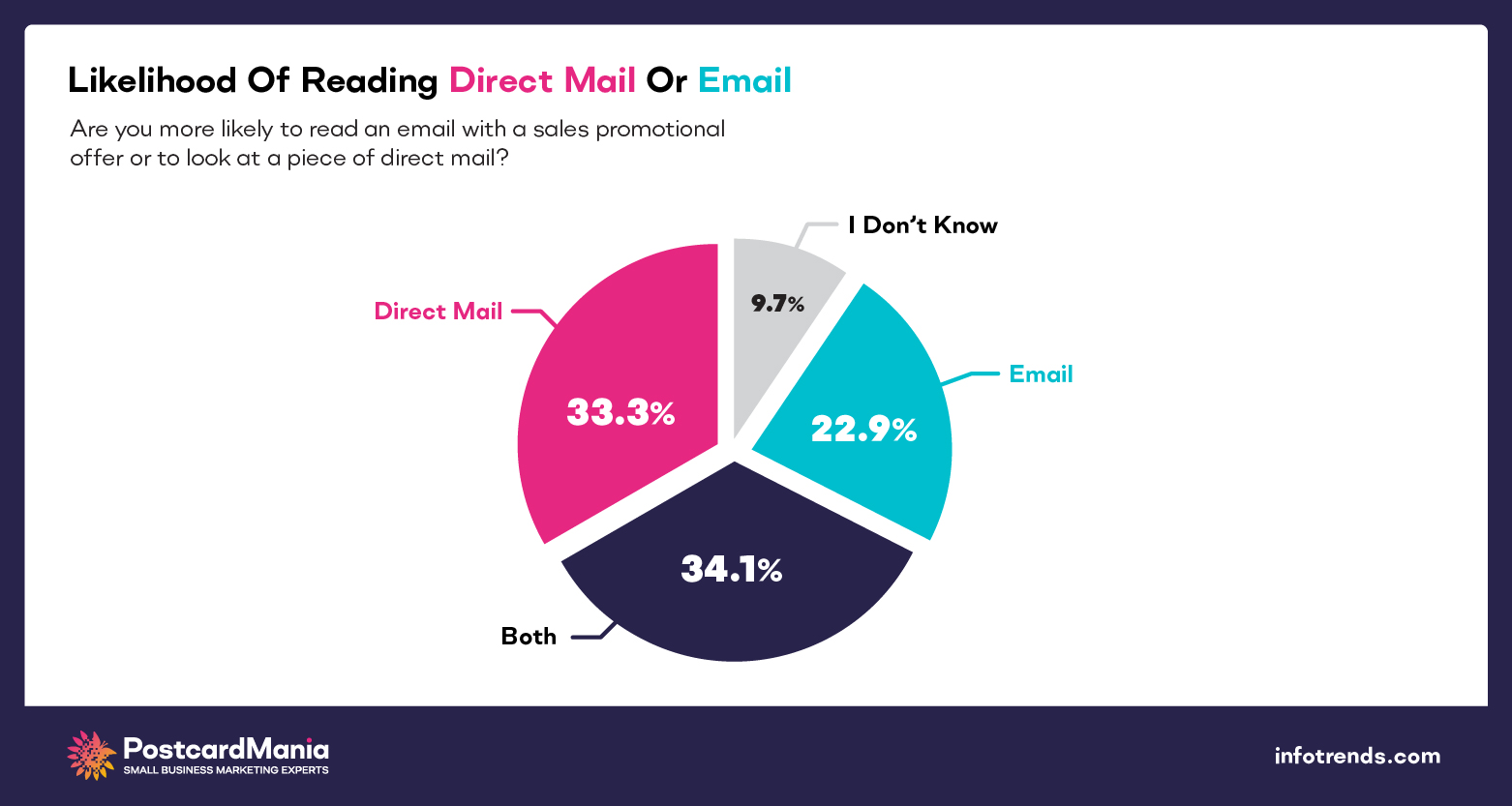
82 Direct Mail Statistics You Should Know in 2022
When we compare response rates of email and direct mail, direct mail wins by a long shot. With an average direct mail response rate between 5% and 9% (depending on the recipient), direct mail leaves email far behind. According to the latest DMA Response Rate Report, email garnered a 1% response rate in 2018 for both household and prospect lists.

Why Your Direct Mail Campaign Isn’t Getting Responses
Based on the DMA's "Direct Mail Response Rates 2003-2018", House List response rose 125% from its 2015 levels and Prospect Lists (acquisition) rose 400% for the same period.. Automotive is the number one industry using direct mail (70%), followed by travel and hospitality (53%), financial services (51%), and retail (48%). Nearly half.

How to Increase Direct Mail Response Rates? Lead Grow Develop
The response rate of your mailing is the percentage of people who responded to the offer. For example, if you mail 1,000 packages and 50 people respond, that's a 5 percent response rate (50 divided by 1,000). According to the Direct Marketing Association (DMA), the average response rate for house lists is 9 percent and the average rate for.

Direct mail response rates exploded in 2018 Spectrum Marketing
This Quarter's Direct Mail Volume & Trends. In Q4 2023, retail/consumer services jumped up to replace credit cards as the top mailer, accounting for 21.2% of total direct mail volume. The mortgage/loan sector showed growth as well, up 20.4% from Q3 and down only 6% from 2022's fourth quarter. Softening interest rates had an impact on the.

Direct Mail Response Rates For Non Profits Rating Walls
Direct mail's average response rate increased from 2.9% to 4.9% for prospects lists and 5.1% to 9% for house lists (current customers/database) between 2017 and 2018. The Data & Marketing Association (2018) When compared to email, paid search, and social media, household mail has a higher response rate at 9%, with the former being only at 1%.
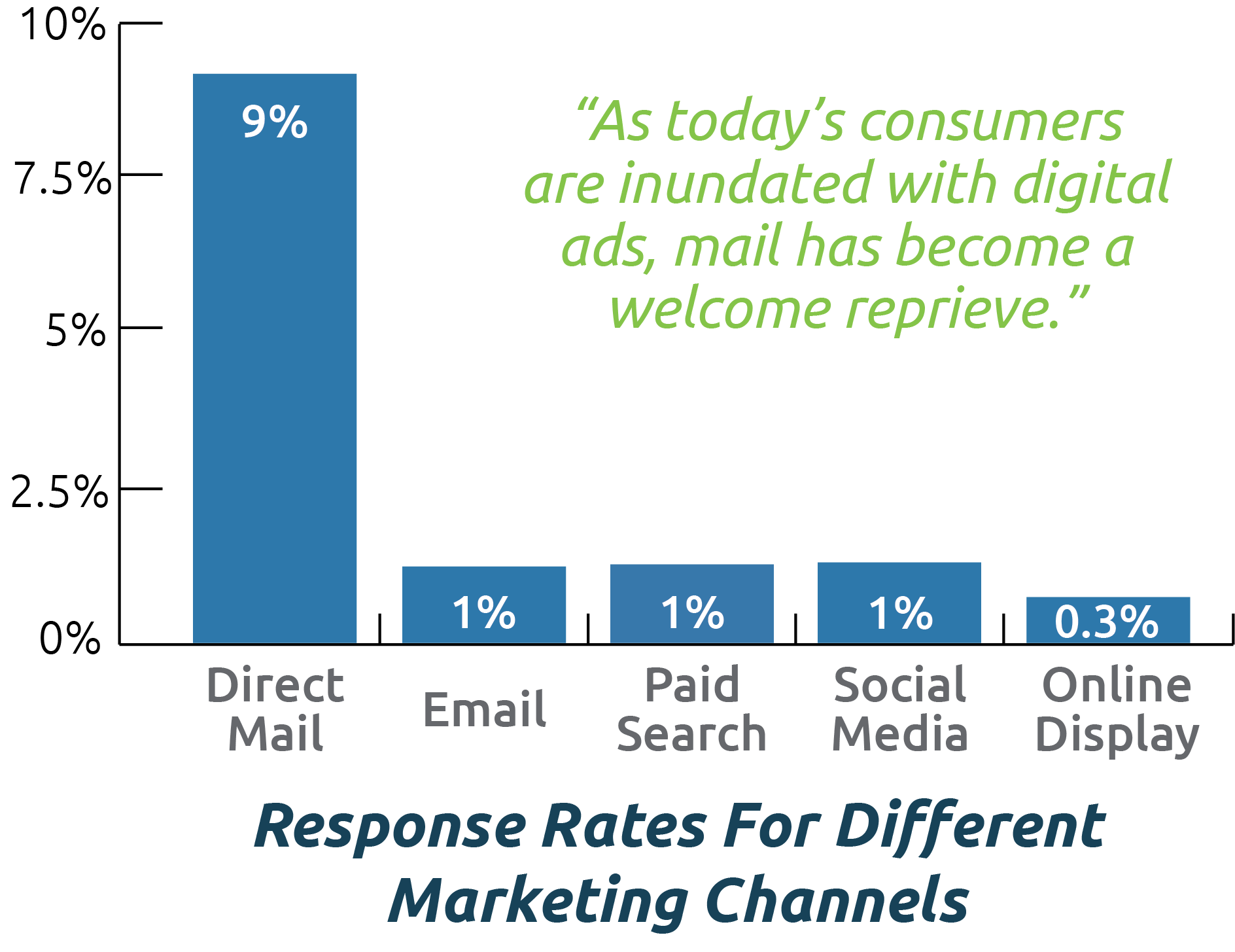
Front Page Jamie Nicholas Printing & Graphics
Factors such as industry, target audience, mailing list quality, offer relevance, and the overall effectiveness of your campaign all play a role in determining response rates.. On average, direct mail response rates typically range between 0.5% and 3%. This means that for every 200 mail pieces sent, you can expect around 1 to 6 responses.

6 Ways To Measure Direct Mail Response
Cost Per Piece - Divide your campaign costs by the total amount of pieces mailed. Depending on the complexity of the piece, the audience, the USPS mail class, and many other factors, your results can vary widely. Response Rate - Divide the total count of responses by the number of pieces mailed, then multiply by 100.
- Te Alquilo Mi Amor Capítulos Completos En Español Youtube
- Cubre Volante Parasol Para Que Sirve
- Cómo Va La Construcción Del Santiago Bernabéu
- Teatro Casa De La Cultura Collado Villalba
- Que Es Un Compuesto Organico
- Bricomart Badalona Construcción Y Reforma
- Carniceria Pasto Y Bellota Santa Ursula
- Defensa Delantera Dacia Duster 2020
- Como Cuidar Una Enredadera De Interior
- Crema Facial Para Manchas Oscuras